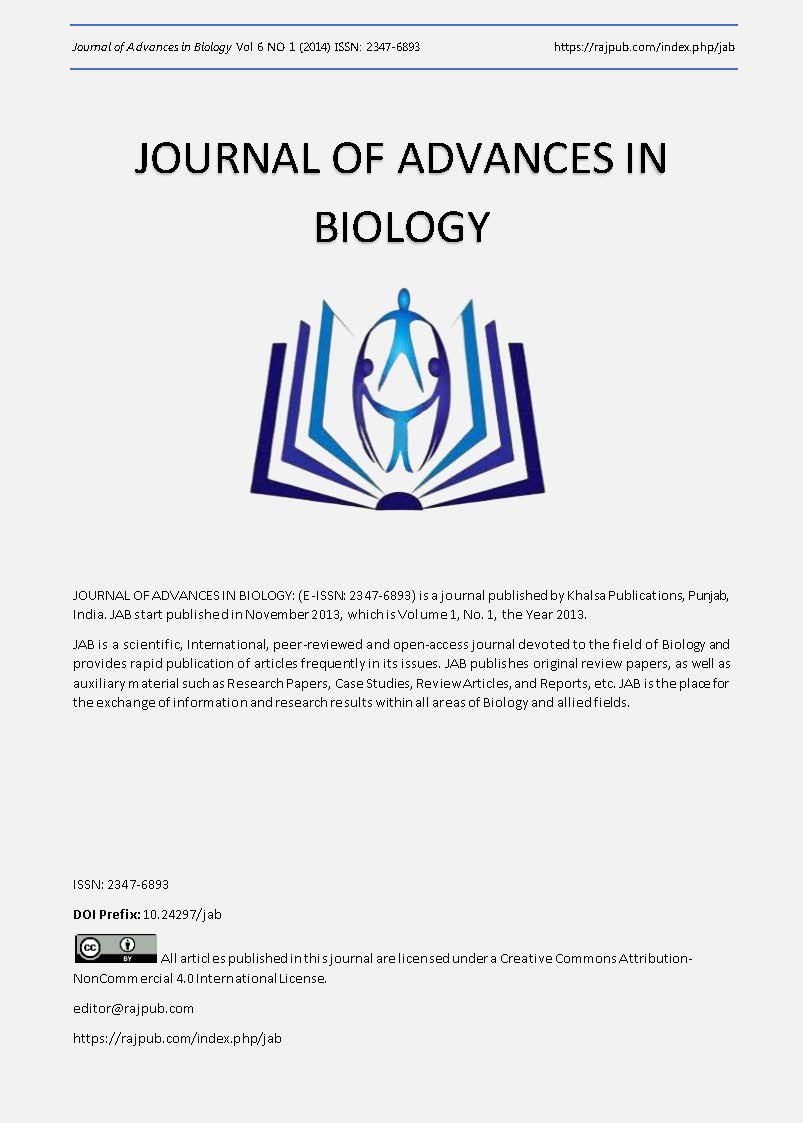EMBRYONIC DEVELOPMENT OF MOLGULA MANHATTENSIS (DE KAY, 1843) WITH EMPHASIS ON THE EFFECT OF SOME BIOACTIVE INDUCERS AND HSP 90 ON LARVAL METAMORPHOSIS
DOI:
https://doi.org/10.24297/jab.v6i1.5454Keywords:
Artificial heterologous insemination, embryonic stages, retrogressive metamorphosis, bioactive chemicals, NO and HSP 90Abstract
Specimens of Molgula manhattensis (De Kay, 1843) were collected during March to June (2013) along the northern estruarine harbour of the Arabian Gulf - Saudi Arabia. Sperm and eggs were sucked from gonoducts and placed separately in suitable Petri dishes containing sea water and antibiotic. Artificial heterologous insemination has been carried out. The different embryonic stages were studied alive and tabulated. Retrogressive metamorphosis of the larval stage till the newly metamorphosed squirt were studied normally and tabulated. Larvae with long tail were placed in certain bioactive chemicals with different concentrations to test whether metamorphosis would be affected. These bioactive chemicals were claimed to induce metamorphosis in an ascidians (Ammonia) or involved in signaling systems (1,2dioctanyl-rac-glycerol) or serve in neuronal control (neurotransmitters acetylcholine and serotonine) or control morphogenesis (NO). Tukey's Multiple Comparison Test with P > 0.05 and One-Way analysis of variance (ANOVA) revealed that NH4Cl (2.5 mM), C8 (1µ M), NOS (2.5 mM), seratonin (10 ïg/ml) and Acetyl choline (0.5 mM) accelerated the transition of larval stage from stage II with long tail to a newly metamorphosed sessile squirts stage IV. The other bioactive compounds did not show a remarkable observation. This study tried to test whether NO and HSP 90 play a role in the development of the larval and/or metamorphosing stages. It was concluded that the heat shock protein 90 is present in the brain vesicle, the nerve cord and all neurons supplying the different parts of the larval body of the larvae with long and short tails. Gradully this protein diminished from the brain vesicle as the larva lost almost its tail. Newly metamorphosed young showed fluorescence without illumination in its external surface.
Downloads
Downloads
Published
How to Cite
Issue
Section
License
 All articles published in Journal of Advances in Linguistics are licensed under a Creative Commons Attribution 4.0 International License.
All articles published in Journal of Advances in Linguistics are licensed under a Creative Commons Attribution 4.0 International License.




